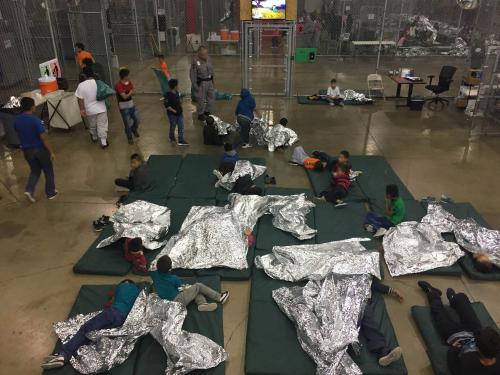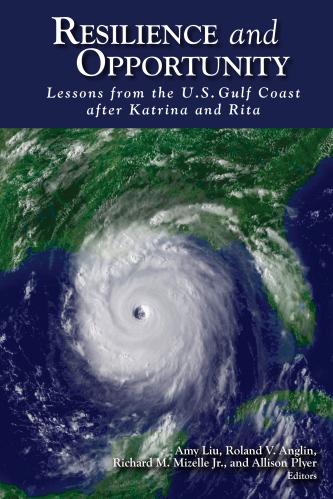President Trump has been thwarted by Congress yet again and is planning to declare a national emergency at the southern border so that he can go ahead and build the border wall that Congress won’t let him build.
There are obvious constitutional concerns with this, the least of which is the very specific “power of the purse” granted by the Constitution in Article I, Section 9. The president’s action is, as House Speaker Nancy Pelosi (D-Calif.) said on the day it was leaked that the president would declare a national emergency, “an end run around Congress” which will no doubt be litigated in the federal courts.
But should the president’s move somehow pass constitutional muster, it would create a pyrrhic victory for Republicans and set a precedent that the GOP would come to regret. That’s because national emergencies can be, as recent history shows, very much in the eye of the beholder—and a president who expands the power of the office for himself also expands the power of the office for his successors. While President Trump believes this national emergency applies only to the border, his actions may reach far beyond the U.S.-Mexico border and endure longer than his tenure as president.
President Trump thinks the situation at the border is a national emergency even though arrests at the border have dropped precipitously since 2000. How else might a future president interpret policy data to identify an emergency that to others may be a controversial declaration?
Imagine what a Democratic president could do with the power to declare national emergencies. While it is doubtful that a Democratic president would declare a national emergency in order to “build transgender bathrooms in every elementary school in America,” as Trump supporter Congressman Matt Gaetz (R-Fla.) predicted. There are other national emergencies that a Democratic president faced with a recalcitrant Congress would be tempted to declare—much to the chagrin of the Republican Party.
Gun control is the most obvious and Speaker Pelosi used it as an example on the anniversary of the Stoneman Douglas High School shooting. More people die from guns in the United States than in any other largely peaceful and wealthy country in the world.
Last year, deaths from guns increased for the third straight year in a row to 39,773 deaths or 12 deaths per every 100,000 people. If a Democratic president saw this number rise to say, 15 deaths per 100,000 people, pressure could be intense for him or her to declare a national emergency and ban the sale of guns. In fact, given that the number of illegal border crossings have decreased for more than a decade, a Democratic president would not even need an increase in gun deaths to make such a declaration under the “Trump National Emergency Precedent.”
A Democratic president could also declare a national emergency over the number of people without health insurance. In the 1960s about 25 percent of Americans went without health insurance. By the 1980s and 1990s that number dropped to around 14 or 15 percent. After passage of Obamacare the percentage of uninsured dropped to an all-time low of 10.9 percent and has crept up under President Trump.
Imagine if the percentage of uninsured reached 20 percent—a number not seen since the 1960s. A Democratic president would be very tempted to declare a national emergency and mandate a public option or a total national health insurance system. A Democratic president could consider any level of uninsured Americans as a public health emergency. A non-trivial number of Americans face health crises and even death each year as a result of lacking insurance or sufficient coverage. President Trump’s concern about the border includes the number of Americans who suffer or die at the hands of individuals who cross the border illegally. Another president could view similar harms, at the hands of an insufficient healthcare system, as a national emergency and act accordingly under the Trump National Emergency Precedent.
Climate change has the potential to create a massive national emergency. As all but the most avid climate deniers now admit, the emergency that is climate change is most visible in the Arctic. As the Arctic Sea ice disappears, the waters around the world rise—causing major disruptions in climate, which affects weather cycles and leads to extreme weather conditions. NASA has measured the Arctic sea ice and finds it has fallen by 13 percent per decade. So what if, during a Democratic presidency, the Arctic sea falls an average of 15 percent per decade and parts of Florida and Louisiana start to stay underwater? Would a Democratic president declare a national emergency and impose strict rationing of fossil fuels or promulgate extensive regulations to curb carbon emissions?
These are but some of the things a Democratic president could do with an expanded power of national emergency. No wonder conservative and Republican lawmakers who can think past tomorrow’s news cycle are worried about the steps their president could take, and are even more worried about the steps his successor could take.
The Brookings Institution is committed to quality, independence, and impact.
We are supported by a diverse array of funders. In line with our values and policies, each Brookings publication represents the sole views of its author(s).











Commentary
A president’s national emergencies are in the eye of the beholder
February 14, 2019